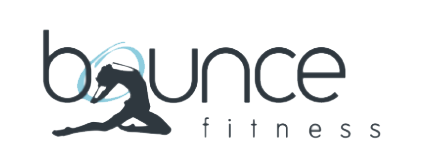Preparing your text is the last step in creating a complex document. This step involves reviewing, editing, and revising your draft. All writers make final changes in their text before submitting it for publishing or approval. When writers review and revise drafts, they continually check that all their objectives are met. They also make sure that formats and other document requirements are followed correctly. This process includes constantly rereading your document and assessing whether it needs more improvement.
The more you review and revise your document, the better your document will get. In this topic, we discuss the basics of reviewing and revising your document and when to know your draft is ready.
Reviewing your draft is one of the most important steps in writing your document. It allows you to re-examine your work and make changes to improve its quality. It also helps you ensure that your content is well-supported and clearly expressed. Writers often review their drafts multiple times before submitting their work to publishers. In the same way, you should be able to revisit your work and make sure that it properly conveys your message.
Reviewing your draft is a step-by-step process. It is not just about fixing your grammar or checking for punctuation errors. Reviewing your draft focuses more on determining whether your document is easy to read and conveys your message.
Simple process to review draft text
You may review your draft by following these steps to confirm the document purpose and requirements are met.
- Identify your main point: The first step to reviewing your draft is to identify your main point. Check if your draft contains a key statement or position and that the information you provided supports this. You must ensure to identify your main point because this is what your entire document is going to be about.
- Evaluate your information and sources: This step is perhaps the most important step in reviewing your draft. Make sure to evaluate the information you presented in your document and check if it supports your main point. Your ideas must also connect to each other, and they must always be connected to your key statement. See if there are ideas that do not fit in your text and delete them if necessary. Also, check if the sources you used are credible. If you have sources that are not that credible, you may want to consider looking for information elsewhere.
- Check your draft’s content: This step will require you to determine whether your draft’s content is suitable to your audience, purpose, format, and structure. A more detailed discussion is provided below. Based on the information gathered, you can then identify if the document type and the way the content is laid out on the page is the most suitable to relay the content of the document. Lastly, determine if the sequence and presentation of information are clear, or if changes need to be made to the document.
Bounce Fitness checklist
Once you finish your initial review, you may also ask yourself the following questions which Bounce Fitness use to help review your draft further. Note: There may be some items in the checklist that you can not check off until after the drafting and review processes have been completed.
 |
||
| Review checklist | Yes | No |
|---|---|---|
| Does your document achieve its purpose? | ||
| Is information cohesive and sufficient to achieve purpose of document? | ||
| Is information cohesive and sufficient to achieve purpose of document? | ||
| Is the format, style and structure consistent throughout the document | ||
| Have you complied with the organisation’s style guide? | ||
| Does the document take into account other policies and procedures? | ||
| Have you used the required template? | ||
|
Have you used a simple effective writing style for the audience with:
|
||
| Is there a balance of information and examples (if required)? | ||
| Are visuals and graphics clear, effective and appropriate? | ||
| Have you referenced your information correctly? | ||
| Are your files an appropriate size and type? | ||
| Have you checked for grammar, spelling and style errors? | ||
| Have you completed internal or external reviews? | ||
| Have you actioned any feedback, gaps or amendments? | ||
| Have you checked visuals and graphics are appropriate? | ||
| Have you had a colleague proofread your document? | ||
Do not worry if you cannot answer all these questions immediately. Reviewing your draft takes time.
Editing final draft
Editing can be described as 'quality control' for the reader. Editing is done after you are satisfied you have made all the decisions (and any rectifications) about the content of your document and its organisation and format. It is at this stage of the writing process that you pay close attention to:
- sentences
- word choices
- punctuation
- spelling
- grammar and usage
- tone.
Watch the following video to learn more about each of these and the general editing process for business writing.
Using track changes to edit content
The 'Track Changes' function in Word allows you to keep a record of amendments made to a document. You can then choose to accept or reject the amendments. It is a useful tool for managing changes made by several reviewers to the same document.12 You can also leave Comments and indicate when a Comment has been ‘resolved’.

Proper grammar, spelling, style, and punctuation are needed to make your writing interesting and clear. Always remember to check your grammar, spelling, style, and punctuation before asking for approval from relevant personnel.
Spelling and grammar
Read the following list with major spelling and grammatical points to watch when reviewing your document.
Punctuation marks
Using the wrong end-of-sentence punctuation can risk giving the wrong message to the readers. Depending on the punctuation used, sentences could become run-on sentences or lack the conviction that might have been intended by the writer for their text. Observing the appropriate punctuation to use at the end of sentences based on the context of the sentence makes it clear what the writer intended to convey with the sentence (e.g., is the writer asking, stating, etc.).
Here are some common punctuation marks and their uses.
- Periods: Periods are used to denote a full stop at the end of a statement or declarative sentence. They are also used in abbreviations.
- Question marks: Question marks determine whether a sentence is a question. They are only used at the end of a statement.
- Exclamation points: Exclamation points are used to show excitement or emphasis in a sentence – use them sparingly.
- Double quotation marks: Double quotations are used to directly quote material from a source.
- Apostrophes: Apostrophes are used to show that a person/thing owns or belongs to something. They can also be used to combine two words to make a contraction (e.g., it’s, we’ve). They can also be used to indicate a missing letter (e.g., ol’).
- Commas: Commas are used to indicate breaks or pauses in a sentence. They are also used:
- when separating a list in a sentence
- between adjectives, if a sentence contains more than one in a row
- for separation between dependent and independent clauses
- for separating introductory words or short phrases (e.g., however, it was disappointing)
- for separating quoted speech or other elements from the rest of the sentence (e.g., ‘It was a typo’, he said)
- between coordinating conjunctions.
Contractions
Contractions such as I’m, you’ll or they’re are often used to create a conversational tone in documents or informal texts such as an email between colleagues. They would generally not be used in more formal documents such as business reports, letters, business cases or business plans. Avoid contractions that are not common, such as I’d’ve (I would have) or You’d (you had, you would) and always spell out:
- would have
- should have
- must have
The following are grammatically incorrect and you should never use:
- would of
- should of
- must of
Run-on sentences
Run-on sentences occur when you combine two sentences together without using punctuation marks as you can see in the following example.
- Incorrect: The report was submitted on time however it was incomplete.
- Correct: The report was submitted on time. It was incomplete.
Capitalisation
Ensure to take note of when you should capitalise words in a sentence. Some instances of when words should be capitalised in a sentence include:
- the first word of a sentence
- proper nouns such as the name of a business unit or department.
Do not capitalise job roles/titles in between sentences, unless used as a form of address, e.g., Director John Murphy, Governor Edwards. Otherwise, it should be in lowercase. The current approach used by many writers and organisational style guides is to minimise the use of unnecessary words, for example in headings within a document. For example:
- Incorrect: Rational for Purchasing New Cleaning Equipment for All Five Bounce Fitness Centres
- Correct: Rational for purchasing new cleaning equipment for all five Bounce Fitness Centres
Subject-verb agreement
Your sentence’s subject and verb must always agree with each other. Always remember that singular subjects and singular verbs go together, while plural subjects and plural verbs go together. For example:
- Incorrect: My colleagues reviews draft documents.
- Correct: My colleagues review draft documents.
Word usage
How you use words can greatly affect your document. Misusing words can confuse your audience and change your document’s direction. Avoid confusing and misused words in your writing. Make sure to check the spelling and definition of a word if you are unsure of its meaning and spelling. Two common mistakes are:
Advise, Advice
- Incorrect: I appreciate your advise.
- Correct: I appreciate your advice.
Effect, Affect
- Effect: Effect is defined as the ability to bring about a result. ‘His crying had no effect whatsoever' or 'Wait for the drug to take effect.’
- Affect: The word affect means to produce a change in something. ‘But that change will affect a lot of people.’
Spelling conventions
The Macquarie Dictionary is a standard reference for Australian English. It is generally considered by universities and the legal profession to be the authoritative source of Australian English. Use Australian, not American English. While American English uses 'z’ in words like organize, organizing and organization, Australian/British English uses 's' as in organise, organising and organisation. There are other common differences, as you can see in the following two lists for American spelling and Australian spelling.
American spelling
- Organization
- Prioritize
- Center
- Color
- Endeavor
- Favor
Australian spelling
- Organisation
- Prioritise
- Centre
- Colour
- Endeavour
- Favour
Spelling errors
Whilst the lists above are not considered spelling errors, spelling errors are commonplace. Some of the most common errors are shown in the following table.
| Incorrect | Correct |
|---|---|
| Definately | Definitely |
| Seperate | Separate |
| Goverment | Government |
| Occured | Occurred |
| Untill | Until |
| Recieve | Receive |
| Intelegent | Intelligent |
| Tommorrow | Tomorrow |
| Maintainance | Maintenance |
| Alright | All right |
Abbreviations and acronyms
When writing for an internal audience, some abbreviations and acronyms may be acceptable because they are common knowledge within the organisation. However, this is not always the case. For example, staff in the human resources team may be unfamiliar with certain financial terms used in the finance team and vice-versa. When writing for an external audience always spell out abbreviations and acronyms when you use them for the first time. You could also include a glossary if the document is complex.
Style guides will often provide guidance on how to use abbreviations and acronyms, grammar, spelling and punctuation rules or conventions.
Scenario
The owner of Bounce Fitness, Margaret House is concerned that some of her team are writing documents that contain mistakes in grammar, spelling, style and punctuation. She has amended the Bounce Fitness Style Guide to include a section on punctuation and grammar including how to format dates and numbers and a reminder to set MS Word on Australian, not American English. She has also included a section of common errors.
Proofreading
Proofreading means carefully checking for errors in a document before it is shared or published. Proofread your document before sharing it with your manager for their approval.
Manually proofread the whole document. This ensures that you are also able to identify the context of the sentences that could explain the use of certain punctuations or sentence structures, something that might be lost when using a computer or application to check. As the review progresses, the document can be manually marked (e.g., track changes, pencil marks, highlights, etc.) to take note of areas where the wrong punctuation was used.
You may enlist the assistance of a colleague to read through the document for you. After they read the document, you can then ask them what writing style they found the document to be in. Based on their feedback, you can then adjust certain parts of the document to improve the writing style for the document’s intended purpose.
Using technology to proofread
If you are looking for a quick way to review your document, you can easily find applications to check for grammatical errors on the internet. Run the document through a spellchecking application (e.g. Microsoft Word Spellchecker) to automatically identify all the misspelled words in a document. You can then skip to all the misspelled words and correct their spelling without having to read the whole document. There are other spellchecking applications you can use, including:
- Grammarly
- LanguageTools
- After the Deadline.
Let us look further at Grammarly which is commonly used in business.
Grammarly
Grammarly is one of the most popular online grammar checking tools. You can add this to your browser to check for errors while you are writing your document. You can easily check your errors since the app underlines grammar, spelling, and contextual errors as you write. It also provides spelling and grammar suggestions and rates your work based on readability, accuracy, and performance. Watch this short video to see how Grammarly can be used for written texts.
There are other apps on the market, including:
- LanguageTool: Like Grammarly, LanguageTool can also be added to your browser or installed as a complete desktop app. What makes LanguageTool unique is that it works with over 20 languages. Some examples of the languages the app works with are German, Polish, Dutch, French, and Tagalog.
- After the Deadline: After the Deadline is an online grammar checking tool that can be downloaded as a desktop app or as a browser extension. This app also checks your text for spelling, style, and grammar.
- Quillbot: Quillbot is a paraphrasing tool to help people rewrite and enhance any sentence, paragraph or article. It has three free modes and four premium modes to choose from.
If you prefer editing your work offline, you can also use MS Word to check for grammatical errors. Simply run a grammar check on your document using the spelling and grammar tool by clicking on the Editor button or pressing F7. You can also use the app’s thesaurus to find words that you may need in writing your document.

Feedback is defined as information concerning one’s understanding and performance.
Feedback gives you information on your progress in an effort to reach your goals. Feedback is needed for several reasons.
- It helps you avoid mistakes.
- It motivates you to do better.
- It keeps you on track.
- It helps you learn.
- It helps you assess your performance.
Obtaining feedback is an essential step in writing your document. If your work was commissioned by someone else, now is the time to get it approved so you can prepare your final copy. If there are changes to be made, make them now and get them approved. Ways to seek feedback include:
- written and electronic comments
- suggestions from peers
- meetings with relevant enterprise personnel
- asking questions that will help you gain additional information on your task or that can help you confirm if your task has been completed.
When writing your draft, always ensure to seek the approval of relevant people in your organisation. Relevant enterprise personnel can refer to any group, institution, or individual who has a role or interest in the document you are writing. These are often referred to as stakeholders and may include colleagues, staff in your work section, team members, consultative committees, managers, leaders, coordinators, supervisors, and owners.
Let us look at each.
- Colleagues/staff in your work section/team members: Your colleagues are an excellent source of feedback. Chances are, they might also be familiar with the type of documents you are writing. They might also be familiar with who your audience is. An advantage of seeking feedback from your colleagues is that you can easily schedule a consultation time. You can also use this opportunity to learn from each other and discuss areas in your work that you may not understand.
- Consultative committees: Consultative committees are created to make proposals or provide advice about your document. You may consult these committees when you want to exchange views and share information on what you are writing.
- Managers/leaders/coordinators/supervisors: Seeking feedback from managers can have a positive impact on your work. This is because managers can provide a detailed explanation of what you are supposed to write. They may also identify what they expect from your document.
- Owners: Owners monitor your management or organisation. Because they are the decision-makers in your organisation, seeking feedback from them can help show that you value their opinions.
Seeking feedback from relevant personnel helps you improve your document. Their feedback may help you determine what works and does not work. It may also provide you with helpful criticisms and suggestions that may guide you in the writing process. Getting your draft approved by someone else can also prevent confusion and misunderstandings when creating your final document.

As mentioned, seeking feedback from relevant personnel may provide you with helpful suggestions and criticisms that may guide you in the writing process. That being said, it is important to remember their feedback and incorporate their comments and suggestions into your work. Reviewing your draft is not just about fixing your grammar or checking for punctuation errors. It is more about determining whether your document is easy to read and conveys your message. Once you have reviewed the draft and are satisfied with what you have produced, you may then begin incorporating the feedback you received into your document.
Simple process to review and incorporate amendments in the final copy
- Scan through your feedback: Scanning through your feedback will always be the first thing to do after consulting relevant enterprise personnel. Doing so will help you gauge the amount of time you will spend revising your work. It will also help you gauge how much work needs to be done and how many changes have to be made.
- Prioritise the feedback you receive: Prioritising the feedback you receive will help reduce the stress you might feel when receiving feedback for the first time. You will know what you need to accomplish first and what can be accomplished later.
- Focus on one issue at a time: Receiving feedback in bulk may sometimes feel overwhelming, especially when your evaluator gives a lot of detailed feedback and specific information. For a case like this, it is always good to focus on one issue at a time. You may choose to concentrate on the biggest issue at hand and resolve smaller issues when you revise your document.
- Incorporate amendments to the entire document: Incorporating amendments to the entire document usually happens when you are given general feedback. For example, your evaluator may have commented that you often write in the first-person perspective when your document requires you to write in the second-person perspective. Addressing this comment would mean that you would have to change all first-person pronouns in your text to second-person pronouns.
- Set aside time for revisions: No revision is perfect on the first try. A cohesive document will have to go through numerous revisions before it can be presented to an audience. Because of this, it is always important to set time aside for further revisions. Ensure to do this whenever you are creating a document and even when you are already in the revision stage.
Scenario
Margaret's business proposal to offer physiotherapist services to her gyms is progressing well and she is at the review stage. She asks one of her senior fitness trainers who has training in allied health and worked as a physio assistant to read through the proposal. The fitness trainer suggests that Margaret includes more detail on the equipment that will need to be purchased including links to local suppliers and/or photos. This will indicate to the potential partner that Bounce Fitness has researched the most current equipment in the market. Margaret's colleague also suggests using a table format to provide information on the risk assessment. This will send a clear message to the potential partner that Margaret has done her due diligence. She also advises Margaret that her tables need to have consistent formatting and suggests that perhaps the watermark should not be on every page.
Design elements help make a document look more credible. They also make your document easier to read and help attract readers. You may work in an organisation where important documents are reviewed by digital designers or graphics specialists to approve the visuals and graphics you have selected. They may suggest alternatives. Usually, organisations provide document templates to maintain consistency in the documents being used in the workplace. However, templates are not always provided for all document types. Because of this, it is important to be knowledgeable about the different design elements used in creating documents.
Basic design elements
When writing your document, it is always important to use basic design elements that suit your audience and purpose. Basic design elements include:
- fonts
- capitalisation
- headings
- visuals and graphics
- justification and alignment
- pictures
- tables
- logos, branding, organisational identity requirements
- margins and paragraph indentation
- page orientation and size
- use and amount of colour
- use and amount of white space
- templates.
Let us look at each.
Fonts
Choosing the appropriate font style and size is important in writing documents. Font styles can be used to support the overall tone of the document. Fun and quirky fonts with lots of embellishments or designs would be a better choice for documents written for a fun purpose in mind, like party invites. A simple font, like Calibri, would be a better choice for academic or business purposes to ensure that readers can read the content well.
Font styles can be classified into two major categories: Serif and Sans Serif fonts. Serif fonts are often used for printed documents as their embellishments give off a more traditional look and thus, add to the professionalism of a document. Sans serif fonts are often chosen for web pages as they are believed to be better for documents that will be viewed through small screens (e.g., smartphones). Other common uses for Sans Serif fonts are for headlines, titles, or any text that is meant to stand out from the rest of the document.
Always remember to choose simple yet professional font styles when writing. Avoid using fonts that can distract your audience. You want your message and words to stand out, not your font. Some common fonts used in a professional setting include:
- Times New Roman
- Arial
- Calibri
- Verdana.
While many organisations prefer a font size 12, make sure to ask your organisation’s preference before submitting your document.
Capitalisation
Always remember to observe proper capitalisation while writing your document. Keep in mind that all sentences and proper nouns start with capital letters.
Headings
Headings can be added in the document to separate sections in a document based on specific groupings, such as categories or discussion points. Readers are then guided on the context of what they are reading and helps guide them to specific sections they might be searching for within the document. Effective headings are consistent, readable, and specific. They also:
- show a logical development of ideas
- allow the reader to selectively scan and read parts of your text
- provide an organisational overview of your document
- tell the reader what to expect from each section of your document.
Visuals and graphics
Always ensure that the illustrative materials you use suit what you are writing. Also, take note of your organisation’s preferred file size and format when sending documents with illustrations online. Pictures can be included in the document to chunk long blocks of text. Readers are given something else to look at either to amuse them or to maintain their interest by providing the information needed in a different format.
Justification and alignment
Proper justification and alignment help your readers navigate through the document faster. Some readers may find reading fully justified text hard since it makes finding the edges of text harder. Use left justification as the default and ensure that normal word spacing is preserved when using full justification. Make sure to find out your organisation’s preferences on justification and alignment to deliver a correct document.
Tables
Tables are added to a document to present numerical data. This allows the writer to present large amounts of numerical data to their readers in a concise and orderly manner. If you are presenting large amounts of information, use lists and tables. This allows you to present your data without having to describe them one by one with words. It is also common practice to label all the tables present in your document and/or tell the reader the purpose of the table.
Logos, branding, organisational identity requirements
Include logos and other organisational identity requirements in your document, especially if your organisation requires you to do so. Some organisations require the use of watermarks and logos to protect their information. If your organisation has policies on using watermarks and logos, make sure to include this in your document.
Margins and paragraph indentation
Observe proper margin and paragraph indentations in your document. Proper indentation can make your text easier to read.
Page orientation and size
MS Word allows you to adjust your document’s page orientation and size and preview your changes. You can access them in the Page Setup group on the Layout tab.
Use and amount of colour
Avoid using colours that make your text difficult to read. If you are using a white background, for example, avoid using light-coloured font colours. You should also avoid using too much colour on your page. Excessive use of colours can distract your readers and discourage them from reading your text. Organisations usually use a black font when writing documents. Make sure that your use of colour conforms to your organisation’s requirements.
Use and amount of white space
White spaces help separate graphics and text in a document. When used effectively, white spaces create balance in your document and help readers read your document’s text. Avoid using too much or too little white spaces; use only the amount that makes reading your document easier.
Templates
Some organisations have pre-set templates for their documents. Ask your organisation about their preferences before writing your document.
Watch the following video to learn how to use Designer in Microsoft Word. Word Designer uses artificial intelligence to quickly identify formatting inconsistencies, as well as give Word template suggestions to apply in a single click. PowerPoint Designer works in a similar way.
Scenario
Margaret has incorporated her colleague's amendments into her final copy. She now checks the final document and applies basic design elements which she feels reflects her organisation in terms of colours and conveys the brand image she wants to portray. She decides to remove the watermark of the Bounce Fitness logo from all the pages except the title page as it looks too cluttered. She uses the Microsoft Designer function to give the proposal a very polished look and feel and applies consistent formatting to the tables as her colleague suggested when the final copy was reviewed.

You are now getting closer to your goal. You have made a draft, finalised your content, and are close to finally finishing what you are writing. Once you reach this point, there is only one thing left to do. You must check if all your document’s requirements have been met. The completeness of your requirements is important for many reasons.
- Verification: Incomplete requirements can result in the document not being published or approved. Consult relevant enterprise personnel for cases where your document requirements are difficult to understand.
- Quality assurance: Checking your document’s completeness is also a means of assessing your document’s quality. Incomplete requirements may mean that your work needs improvements. Complete requirements, on the other hand, indicate that you are ready to submit your document.
- Satisfaction and acceptance: The completeness of your requirements can also determine whether your readers will be satisfied with your work. It will also determine whether your readers will accept what you wrote.
Simple process to check the document and confirm requirements met
- Create a checklist of your document’s requirements: You may create a checklist of your requirements so you can easily check what you have or have not accomplished. A checklist may also help you organise your content and ensure that it is consistent and complete.
- Use word processing software: Using word processing software will help ensure that the required design elements of your text are met. For example, you may check your document’s justification and alignment by checking your document’s layout.
- Review your final text: Reviewing your final text’s content can help you determine whether your purpose was clearly conveyed. It will also help determine whether your content matches your purpose and is appropriate to your audience.
After you have printed your final copy, once again, get someone to go over it to proof and to ensure that it is going to do the job as effectively as you intended. Follow these steps every time you write a formal document of any size.
Margaret the owner at Bounce Fitness expects that all staff will use the following Review Checklist, especially when writing documents that have an external focus, such as proposals, marketing materials, feedback surveys, information brochures, and newsletters. In fact, any document representing Bounce Fitness!
 |
||
| Review Checklist | Yes | No |
| Does your document achieve its purpose? | ||
| Is information cohesive and sufficient to achieve purpose of document? | ||
| Does the format, style, and structure suit the document? | ||
| Is the format, style and structure consistent throughout the document | ||
| Have you complied with the organisation’s style guide? | ||
| Does the document take into account other policies and procedures? | ||
| Have you used the required template? | ||
|
Have you used a simple effective writing style for the audience? This includes:
|
||
| Is there a balance of information and examples (if required)? | ||
| Are visuals and graphics clear, effective, and appropriate? | ||
| Have you referenced your information correctly? | ||
| Are your files an appropriate size and type? | ||
| Have you checked for grammar, spelling and style errors? | ||
| Have you completed internal or external reviews? | ||
| Have you actioned any feedback, gaps or amendments? | ||
| Have you checked visuals and graphics are appropriate? | ||
| Have you had a colleague proofread your document? | ||
Scenario
Margaret is ready to check the document one final time before sending it to her potential business partner. She does a final review against the points in the Bounce Fitness review Checklist. Every item on the checklist is ticked Yes so she PDFs the document and writes a short, friendly but formal email to the physiotherapist. She lets her potential partner know that she will follow up the proposal with a phone call in a couple of days and hopefully arrange a time to meet in person.
Key points
- Start the writing process with a content overview to help you organise the information and data you want to present in your document.
- Reviewing your draft allows you to re-examine your work and make changes to improve its quality.
- Always remember to check your grammar, spelling, and style before asking for approval from relevant personnel.
- You can easily find applications to check for grammatical errors on the internet.
- Obtaining feedback is an essential step in writing your document.
- When writing your draft, always ensure to seek the approval of relevant enterprise personnel.
- When writing your document, it is always important to use basic design elements that suit your audience and purpose.
- Make sure to check if all your document’s requirements have been met.
The final activity for this topic is a set of questions that will help you prepare for your formal assessment.

